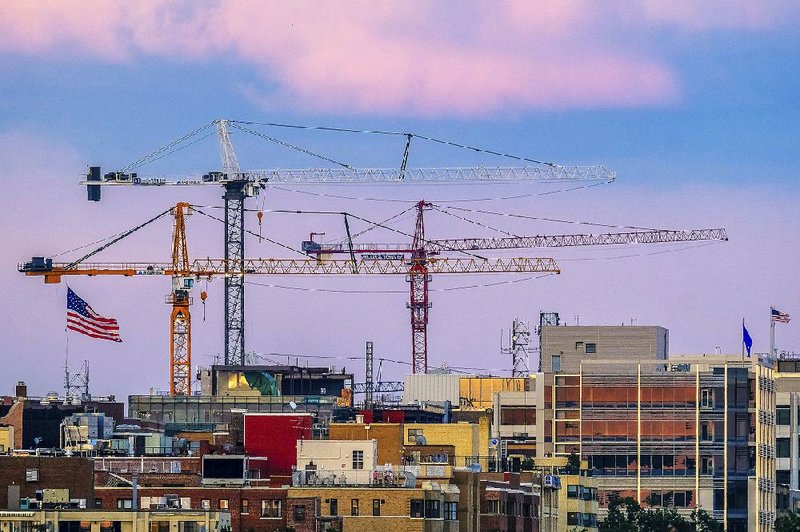WASHINGTON -- U.S. factories expanded at a brisk pace in August as new orders, production and employment all improved.
The Institute for Supply Management said Friday that its manufacturing index rose to 58.8 percent last month from 56.3 percent in July. Anything above 50 signals that factory activity is increasing.
The measure now stands at its highest level since April 2011, pointing to solid economic growth.
A second report released Friday said U.S. construction spending fell in July for the third time in four months as strength in home construction wasn't enough to offset weakness in nonresidential building and government projects.
Fourteen of eighteen manufacturing industries surveyed by the Institute for Supply Management posted growth in August, including the machinery, petroleum and coal products, and computer and electronic products sectors.
August was "a really strong month," Timothy Fiore, chairman of the institute's manufacturing business survey committee, said in a telephone interview. He noted that the growth was mostly driven by the top manufacturing sectors.
It's early to predict Hurricane Harvey's impact on the oil, gas and chemical industries and on the broader economy. But Fiore said a snap survey of institute members showed there likely will be a significant hit to the petroleum and chemical products sectors and "lots of supply chain disruptions."
Refining capacity, raw materials and the ability to deliver products all have been drastically affected by the storm that lashed Houston and nearby areas and shut down oil refineries, plastics plants and the Houston port -- the second-busiest in the nation.
The chemical products sector is one of the six biggest manufacturing industries, accounting for 17 percent of total activity, Fiore noted. Petroleum and coal, also among the "Big Six," account for 7 percent. Texas represents more than 10 percent of U.S. manufacturing production. Chemical products refining in the state accounts for 20 percent of the U.S. total, and oil and gas in the state represents 30 percent.
U.S. factories have largely recovered from a slump in late 2015 and early 2016 caused by cutbacks in the energy industry and a strong dollar, which makes U.S. goods more expensive in foreign markets. Manufacturing employment began a sustained turnaround in December and enjoyed four additional months of job gains. A downturn of about 1,000 manufacturing jobs in May was followed by more job gains in June and July.
New government data issued Friday showed that manufacturing was one of the leading sources of U.S. job growth in August, adding 36,000 workers.
Construction spending dropped 0.6 percent in July following an even bigger 1.4 percent decline in June, the Commerce Department said Friday. Spending on home construction rose 0.8 percent as single-family homes and remodeling offset a drop in apartments.
Spending on nonresidential projects fell for a second straight month, declining 1.9 percent. Spending on government projects fell 1.4 percent.
With the recent weakness, construction spending is only 1.8 percent higher than a year ago at a seasonally adjusted annual rate of $1.21 trillion. Analysts expect construction will provide modest support for the overall economy in the months ahead.
The fall in nonresidential activity in July was the biggest setback in nearly two years, since a 2.1 percent decline in October 2015. In July, spending on offices, shopping centers and hotels all declined.
Spending on government construction projects was down 1.2 percent at the federal level and 1.4 percent at the state and local level.
The government reported earlier this week that the overall economy grew by 3 percent in the April-June quarter, up from a 1.2 percent gain in the first quarter, as measured by the gross domestic product.
However, spending on residential construction actually fell at a 6.8 percent rate in the spring following a 11.1 percent gain in the first quarter.
Business on 09/02/2017
